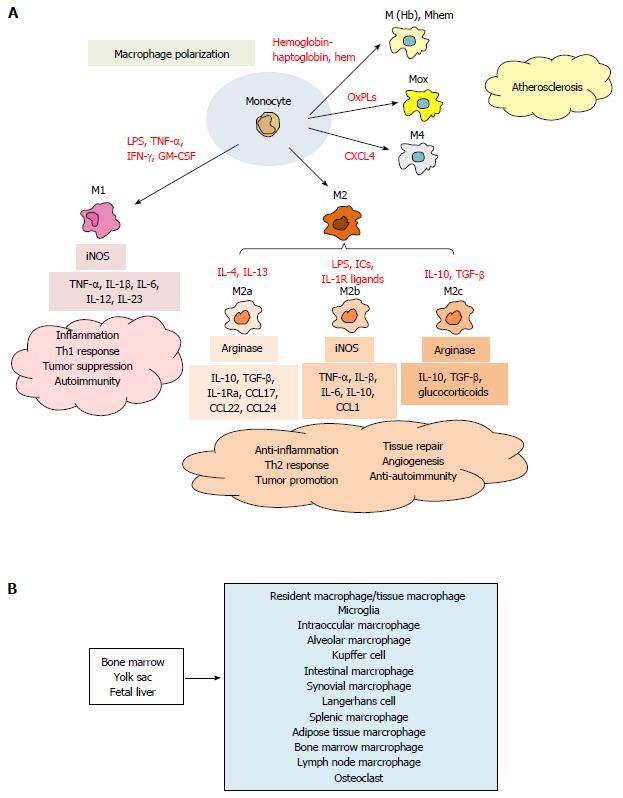Copyright
©The Author(s) 2017.
Figure 1 Macrophage differentiation and resident macrophages.
A: Naïve monocytes differentiate into M1, M2 and atherosclerosis-related macrophages [M(Hb), Mox, and M4] by various stimuli. M1 macrophages enhance inflammation through producing TNF-α, IL-1β, IL-6, IL-12 and IL-23. M2 macrophages polarize to three subsets (M2a, M2b and M2c) by cytokines or ICs to suppress inflammation and repairs tissues through producing regulatory cytokines, such as IL-10, TGF-β, Il-1R ligands and IL-6. Macrophage precursors (monocytes) are circulating, and quickly migrate into all tissues of the body, in which monocytes differentiate into mature macrophages with unique functions in each tissue; B: Resident /tissue macrophages are derived from bone marrow, yolk sac, and fetal liver to settle in various tissues. Resident macrophages contribute to homeostasis in the tissues. OxPLs: Oxidized phospholipids; ICs: Immune complexes; IFN: Interferon; TNF: Tumor necrosis factor; IL: Interleukin; MCP-1: Monocyte chemotactic protein-1; LPS: Lipopolysaccharide; iNOS: Inducible nitric oxide synthase.
- Citation: Ushio A, Arakaki R, Yamada A, Saito M, Tsunematsu T, Kudo Y, Ishimaru N. Crucial roles of macrophages in the pathogenesis of autoimmune disease. World J Immunol 2017; 7(1): 1-8
- URL: https://www.wjgnet.com/2219-2824/full/v7/i1/1.htm
- DOI: https://dx.doi.org/10.5411/wji.v7.i1.1









